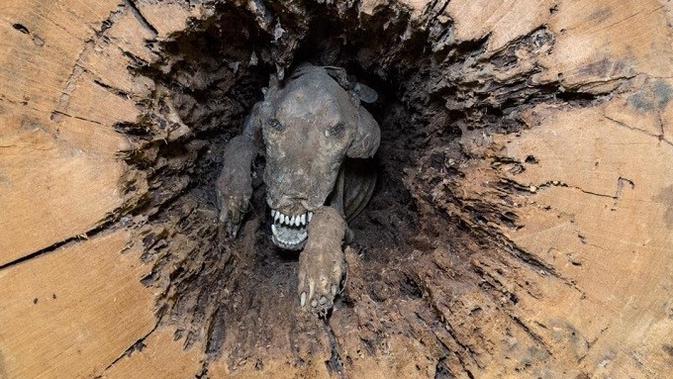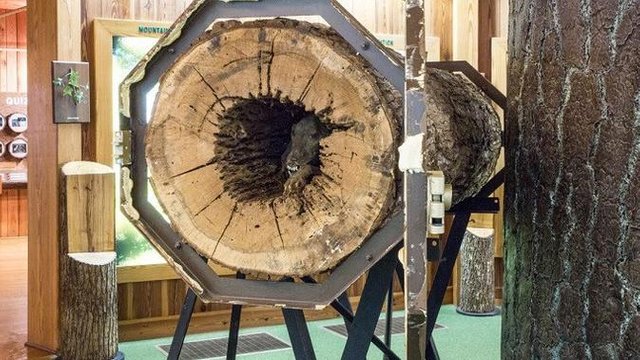60 Years Stuck in a Tree, This Dog Carcass Is Fixed Whole

A museum generally stores ancient objects or other historical relics. However, not with this one museum.
Museum Southern Forest World in Waycross, Georgia, just keep the animal carcasses.
Not an ordinary carcass of course, the dead animals that are in the museum has experienced natural preservation alias to be a mummy.
For example, a dead dog is caught in the trunk of his caste oak tree (Castanea sativa).
The visitors were amazed by the natural phenomenon, how could the dog's body not decay and remain intact? Though he is not preserved like most mummies in general.
A biological anthropologist from the University of West Florida, Kristina Killgrove, explains, the rare occurrence that could have happened, because the wood from the oak caste tree can function like a coffin.
The oak tree is known to contain vegetable tannins, a polyphenol compound with bitter taste and chelates that can agglomerate proteins or various other organic compounds, including amino acids and alkaloids.
Tanin is often used by people to dry (tone) the skin of animals to be durable.
In the tannery process, tannins react with proteins from animal bones. This process will protect the skin from the attack of bacteria that destroy it.
In addition, tanning will give a certain color, and form the density and elasticity of animal skin.

Usually when a person or animal dies, microbes in the body multiply due to biological processes. Microbes begin to undermine the body and microorganisms in the gut also begin the process of decay.
"They grow, reproduce, and take over the body, causing the body to become swollen and decayed due to bacteria, fungi, insects and other animals," said Killgrove, told Newsweek on Friday (19/1/2018).
In other words, when the tanin from its cedar oak absorbs the moisture around the dog's carcass, then the dog will not experience decay.
Museum spokesperson Bertha Sue Dixon said this natural preservation is also affected by the position and shape of the tree. The air that blows up helps the dog's carcass remain intact.
"The oak rod is like a chimney, the air flowing inside it makes other animals hard to smell the carcass," Dixon said.
Seeing preserved animals may not be a special sight.
But what if the animal is preserved naturally?

This phenomenon was discovered by loggers working for The Georgia Kraft Corp. in the 1980s.
They saw the carcass of a hunting dog trapped in the cavities of their castrated oak tree.
The dog is thought to have run into a tree hole in the 1960s to pursue something, possibly its prey.
Nahas, the tree cavity is too narrow, thus making the poor dogs squeezed. Though the dog had died with a pitiful face, his body had been preserved naturally.
Seeing this fact, the loggers do not necessarily cut the tree it cuts. Instead they brought a tree trunk to the Southern Forest World museum.
Until now, the dog is still in the same position and pose, as when he was first discovered.